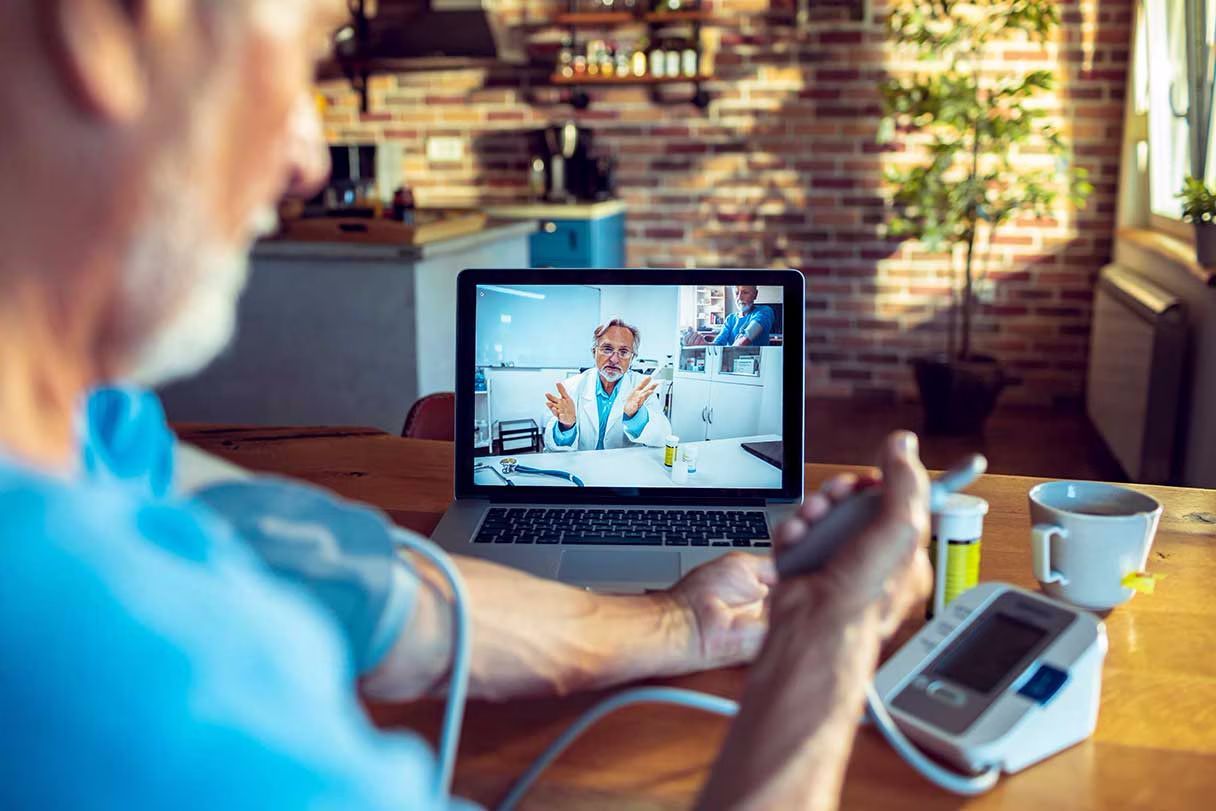Enhancing Healthcare Access & Efficiency
Through Telemedicine & Telepharmacy
Abstract
This blog post explores the transformative benefits of telemedicine and telepharmacy in reducing wait times for medical care and prescription dispensing. By introducing the innovative concept of direct medicine dispensing through MEDnRX, patients can bypass traditional pharmacy lines and receive their prescriptions swiftly. Additionally, telemedicine facilitates on-screen consultations and immediate prescription fulfillment, combining convenience with rigorous security measures. Integrating cash and insurance payment options further enhances the patient experience, making healthcare more accessible and efficient.
Introduction
The healthcare landscape is constantly evolving, and with it comes the need for innovative solutions to address its challenges. One of the most pressing issues in healthcare today is the excessive wait times that patients often endure when seeking medical care and filling prescriptions. These prolonged wait times not only inconvenience patients but can also have serious consequences for their health, especially in cases where timely intervention is critical (1).
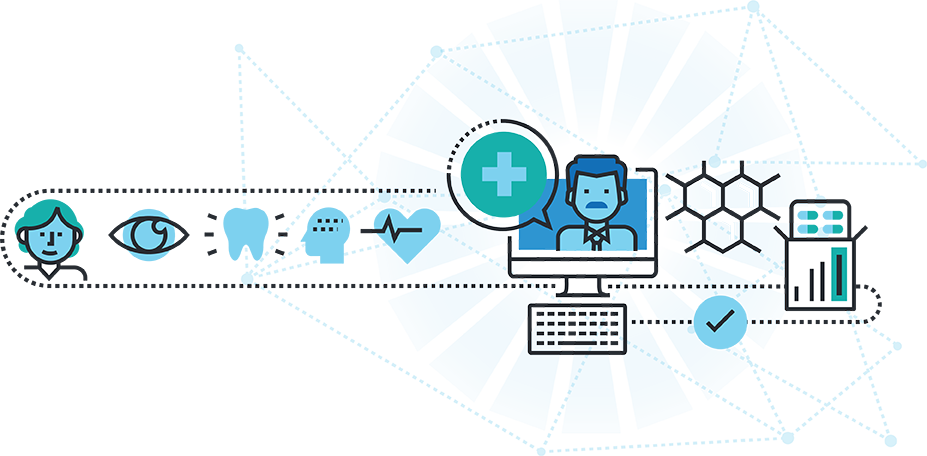
Problem Statement: Excessive Wait Times in Healthcare
Long wait times in healthcare have been a persistent problem, affecting both primary care and pharmacy services. Patients often spend hours in crowded waiting rooms, and when it comes to prescription pickups, the journey from obtaining a prescription to actually receiving the medication can be frustratingly slow. This issue is exacerbated by various factors, including the shortage of healthcare providers in certain regions, the complexities of insurance processes, and the general inefficiencies within the healthcare system (1).
The Role of Telemedicine and Telepharmacy
Telemedicine and telepharmacy have emerged as promising solutions to address the problem of excessive wait times in healthcare. These technologies leverage the power of digital connectivity to bridge the gap between patients and healthcare professionals, providing an array of benefits that include remote consultations, immediate prescription fulfillment, and streamlined payment options. In this white paper, we will delve into the details of telemedicine and telepharmacy, exploring how they reshape healthcare and enhance patient experiences (1).
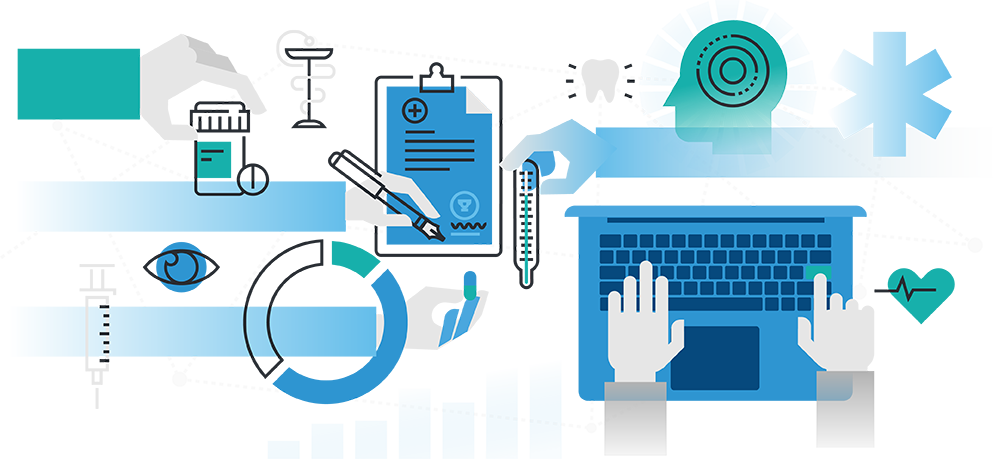
Telemedicine: A Gateway to Efficient Healthcare Delivery
Definition and Scope of Telemedicine
Telemedicine refers to the practice of providing medical services remotely through digital communication tools such as video calls, phone calls, and secure messaging platforms. This encompasses a wide range of services, including remote consultations, diagnoses, and treatment planning. Telemedicine has the potential to connect patients with healthcare professionals regardless of geographic barriers, providing them with timely access to medical expertise (1, 2).
Benefits of Telemedicine
Remote Consultations and Diagnoses
One of the primary advantages of telemedicine is its ability to facilitate remote consultations and diagnoses. Patients can interact with healthcare providers from the comfort of their homes or workplaces, eliminating the need for physical visits to clinics or hospitals. This saves time and reduces the burden on healthcare facilities, allowing them to allocate resources more efficiently (1, 2).

Reduction of Geographic Barriers
Telemedicine transcends geographical boundaries, making it possible for patients in remote or underserved areas to access medical care. This is particularly valuable in regions with a shortage of healthcare professionals or specialized medical services. Patients no longer have to endure long journeys to receive the care they need; instead, they receive care through digital channels (1, 2).
Timely Access to Medical Professionals
In healthcare, time is often of the essence. Telemedicine enables patients to receive timely medical attention, especially in urgent situations. Through virtual consultations, medical professionals can quickly assess a patient’s condition, provide guidance, and, when necessary, recommend further steps such as in-person visits or hospitalization. This rapid response can be lifesaving (1, 2).
Telepharmacy: Revolutionizing Prescription Fulfillment
Introduction to Telepharmacy
Telepharmacy is an innovative branch of telemedicine that specifically focuses on efficiently dispensing prescription medications. It aims to address the long-standing issue of lengthy wait times at physical pharmacies. Telepharmacy achieves this through various means, with one standout solution being the introduction of MEDnRX technology (1)
Pharmacy Prescriptions by the Numbers
Over 4.5 billion retail prescriptions are filled annually in the United States, with numbers set to increase in the coming years (3). This translates to approximately 143 prescriptions filled per second over the span of a year. However, this accounts for only 80% of prescriptions that are written, as 1 in 5 new prescriptions are never filled (4).
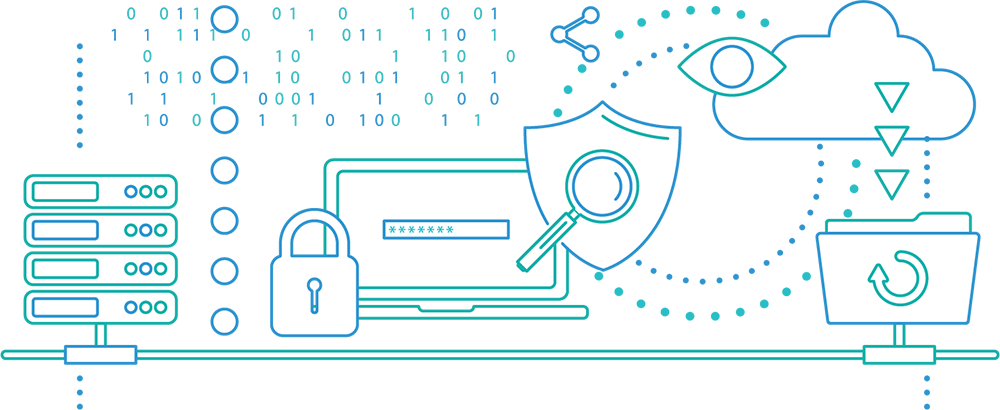
Direct Dispense of Medicine Through MEDnRX
Eliminating Pharmacy Wait Times
The hallmark of telepharmacy’s efficiency is the direct dispensing of medications through MEDnRX technology, effectively eliminating the need for patients to endure long pharmacy wait times.
- Statistics: According to a study by the National Center for Health Statistics (NCHS), the average wait time at traditional pharmacies can range from 15 minutes to over an hour, depending on factors such as location and time of day (6).
MEDnRX Technology and Functionality
The MEDnRX is a sophisticated automated system that securely stores and dispenses prescription medications. Its functionality is designed to optimize prescription fulfillment and reduce the risk of errors commonly associated with manual prescription filling.
- Prescription Verification: MEDnRX employs advanced technology to verify prescriptions, ensuring that patients receive the correct medications as prescribed by their healthcare providers (7).
- Medication Retrieval: When a prescription is verified, the MEDnRX system efficiently retrieves the required medication from its secure storage, minimizing the time needed to fulfill the order (7).
- Secure Dispensing: Medications are dispensed securely, with patients typically accessing their prescribed medications by scanning a QR code or using a secure authentication process. This enhances the safety and accuracy of medication distribution (7).
- Error Reduction: The automated nature of MEDnRX significantly reduces the risk of errors that can occur during manual prescription filling. This translates to improved patient safety (7).
Quantifying Pharmacy Wait Times
Distance to Pharmacies
To understand the impact of telepharmacy on reducing wait times, it’s important to consider the distance patients must travel to reach a physical pharmacy. In many cases, patients may live far from the nearest pharmacy, necessitating time-consuming journeys.
- Statistics: According to the National Association of Chain Drug Stores (NACDS), approximately 5% of Americans live in areas with limited access to pharmacies, meaning they must travel significant distances to reach one (8). For these individuals, the advent of telepharmacy and MEDnRX technology can be a game-changer in reducing travel time and improving access to medications.
Average Wait Times for Prescription Pickup
Traditional pharmacy wait times vary widely, with some patients waiting hours to obtain their medications. These delays can adversely affect patient adherence to prescribed treatments and healthcare outcomes.
- Statistics: On average, patients spend about 52 minutes waiting for their prescriptions to be filled at brick-and-mortar pharmacies (9). This wait time can increase during peak hours or in areas with high demand for pharmacy services.
Comparative Analysis of Wait Times
By comparing the wait times for prescription pickup at physical pharmacies to those facilitated by telepharmacy and MEDnRX technology, we can gain insight into the tangible benefits of this innovative approach.
- Case Studies: Multiple case studies have demonstrated significant reductions in wait times with the implementation of telepharmacy. In some instances, patients have reported receiving their prescriptions much faster than traditional pharmacy pickup waiting times (7).
- Patient Satisfaction: Patient satisfaction surveys conducted by healthcare providers using telepharmacy consistently report high satisfaction levels, particularly regarding reduced wait times and convenience (7).
These statistics and insights underscore the transformative impact of telepharmacy and MEDnRX technology in streamlining prescription fulfillment, reducing wait times, and enhancing the overall patient experience in healthcare.
The Value Proposition of MEDnRX
and Telemedicine
Enhancing Patient Convenience and Experience
The integration of MEDnRX and telemedicine results in a significantly improved patient experience. Patients no longer need to spend precious time visiting a pharmacy or waiting in long lines. Instead, they can access their prescribed medications swiftly and effortlessly. This level of convenience not only reduces stress for patients but encourages medication adherence, as the barriers to obtaining essential medications are drastically lowered.
Minimizing Time and Travel Expenses
Time is a valuable resource, and patients often have to take time off work or sacrifice other commitments to visit healthcare facilities or pharmacies. With telepharmacy’s direct dispensing through MEDnRX, patients can save both time and travel expenses. The convenience of obtaining medications without leaving their homes or workplaces contributes to a more efficient and cost-effective healthcare experience.

Improving Medication Adherence
Medication adherence is a critical factor in healthcare outcomes. Patients who struggle with the inconvenience of traditional pharmacy wait times are more likely to skip or delay taking their prescribed medications. Telepharmacy addresses this issue by making medications readily available, promoting better adherence, and ultimately leading to improved patient health.
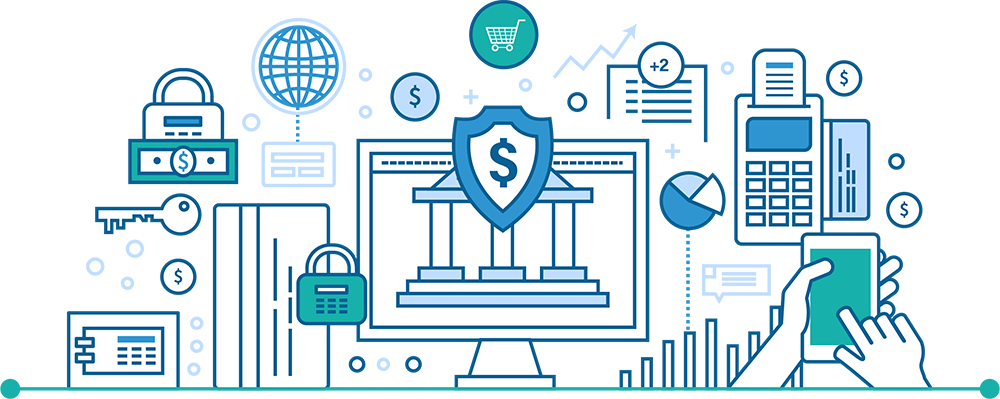
Security and Privacy Measures
Ensuring Patient Confidentiality
Telemedicine and telepharmacy prioritize the privacy and confidentiality of patient information. Robust security measures are in place to protect sensitive data. Encrypted communication channels, secure servers, and strict access controls are standard components of these technologies. Patients can rest assured that their medical information is kept confidential.
Compliance with Healthcare Regulations
The healthcare industry is subject to stringent regulations to safeguard patient welfare. Telemedicine and telepharmacy providers adhere to these regulations, ensuring that their services meet the necessary standards for quality and safety. Compliance with regulations protects patients and builds trust in these innovative healthcare solutions.
Data Encryption and Secure Transactions
All data transmitted during telemedicine consultations and telepharmacy transactions is encrypted to prevent unauthorized access or data breaches. Secure payment options are also integrated, protecting financial transactions from potential threats. These security measures are integral to maintaining the integrity of telemedicine and telepharmacy services.

Utilizing MEDnRX and Telemedicine: User Experience
Accessing the MEDnRX App
The user experience of telepharmacy begins with accessing the MEDnRX app. Patients can easily download and install the app on their smartphones or tablets. The user-friendly interface guides them through the process, making it accessible to individuals of all technological backgrounds.
On-Screen Consultation Process
Telemedicine consultations are initiated through the MEDnRX app, which connects patients with licensed healthcare professionals. During virtual consultations, patients can schedule appointments, provide medical history, and discuss their symptoms and concerns. The on-screen experience is designed to mimic an in-person visit, with high-quality video and audio capabilities ensuring clear communication.
Prescription Issuance and Direct Dispense
Following a successful consultation, healthcare providers can issue prescriptions electronically. These prescriptions are then transmitted securely to the MEDnRX system for dispensing. Patients receive a notification on their app, confirming that their medication is ready for pickup. The direct dispensing feature of MEDnRX ensures that patients can access their medications immediately after the consultation, eliminating any wait times associated with traditional pharmacies.
Payment Options: Cash and Insurance
Telepharmacy solutions are designed to be inclusive and flexible. Patients can choose from various payment options, including cash and insurance. Those who prefer to pay out-of-pocket can do so seamlessly, while others can use their insurance coverage to offset costs. This flexibility makes healthcare more accessible to individuals with different financial circumstances.
Case Studies and Success Stories
Real-World Examples of Improved Healthcare Access

Pharmacists as Part of the Care Plan: Better Outcomes
In this insightful case study, pharmacists were seamlessly integrated into the care plan for patients, collaborating closely with healthcare professionals (10). This partnership aimed to manage medications more effectively and achieve better patient outcomes. The results were nothing short of remarkable.
- Enhanced Medication Management: By actively involving pharmacists in patient care, medication management became a collaborative effort. This not only led to increased medication adherence but also a reduced risk of adverse drug interactions and errors.
- Streamlined Processes: With pharmacists as an integral part of the care team, the process of prescribing, verifying, and dispensing medications became more streamlined. This meant that patients received their medications promptly, with minimal delays or confusion.
- Patient-Centric Approach: The collaborative approach emphasizes patient-centered care. Patients felt more engaged in their treatment plans, as they had access to expert pharmacological guidance alongside medical advice. This not only improved patient outcomes but also boosted overall patient satisfaction.

Reducing Medication Turnaround Time for Hospital Discharges
Hospital discharges are critical junctures in patient care, and delays in medication access post-discharge can have serious repercussions (11). In this case study, measures were taken to address this issue and significantly improve patient care.
- Reduced Readmission Rates: One of the most significant outcomes of this initiative was the substantial reduction in hospital readmission rates. Patients who received their medications promptly after discharge were less likely to experience complications or exacerbations of their conditions.
- Enhanced Caregiver Satisfaction: It’s not just patients who benefit. Caregivers and family members experienced higher satisfaction levels, knowing their loved ones were receiving the necessary medications without unnecessary delays.
- Cost Savings: This case study demonstrated potential cost savings for both healthcare facilities and patients by reducing the need for readmission and associated healthcare costs.

Overcoming Time Constraints and Healthcare Dissatisfaction
This study shed light on a pervasive issue—individuals sometimes avoid seeking medical care due to time constraints or dissatisfaction with previous healthcare experiences (12). Telemedicine and telepharmacy emerged as effective solutions to address these concerns.
- Convenience Redefined: Telemedicine allows patients to consult with healthcare providers without the need for time-consuming trips to medical facilities. It offers the convenience of scheduling appointments at a time that suits the patient, thus making healthcare more accessible.
- Improved Satisfaction: The ability to consult with healthcare professionals via telemedicine often leads to increased patient satisfaction. Patients appreciate the personalized care and the opportunity to address their concerns promptly.

Addressing Long Waiting Times and Staffing Challenges
This case study from Malaysia highlights a global issue—the long waiting times and staffing challenges in pharmacy care (13). Telepharmacy solutions, such as MEDnRX, aim to tackle these problems head-on.
- Immediate Medication Access: Telepharmacy solutions provide an innovative approach to eliminating long waiting times at physical pharmacies. With MEDnRX, patients have the opportunity to access their medications almost instantly, significantly reducing the time spent waiting.

- Efficient Staff Utilization: Telepharmacy doesn’t replace pharmacists but allows them to focus on clinical aspects of care while automation handles routine dispensing tasks. This optimizes staff utilization and improves overall pharmacy efficiency.

Resolving Waiting Time Issues Through Innovation
While many healthcare settings have traditionally focused on informing patients of delays and apologizing for them, this study emphasizes the importance of proactive measures to address the issue (14). Telepharmacy, exemplified by MEDnRX, offers a novel approach.
- Instant Medication Pickup: With MEDnRX technology, waiting times at physical pharmacies are virtually eliminated. Patients receive a text notification, pick up their medications, and are on their way, reducing the frustration associated with traditional pharmacy waits.
- Enhanced Patient Experience: Beyond just resolving waiting time issues,
MEDnRX significantly enhances the patient experience. It offers convenience and speed that aligns with modern expectations for efficient service.
These case studies and success stories illuminate the transformative potential of telemedicine and telepharmacy in addressing real-world healthcare challenges. By providing innovative solutions that enhance patient access, reduce waiting times, and improve the overall healthcare experience, telepharmacy technologies like MEDnRX are becoming indispensable components of the modern healthcare ecosystem. These examples underscore the value proposition of telepharmacy in solving known issues and making healthcare more patient-centric.
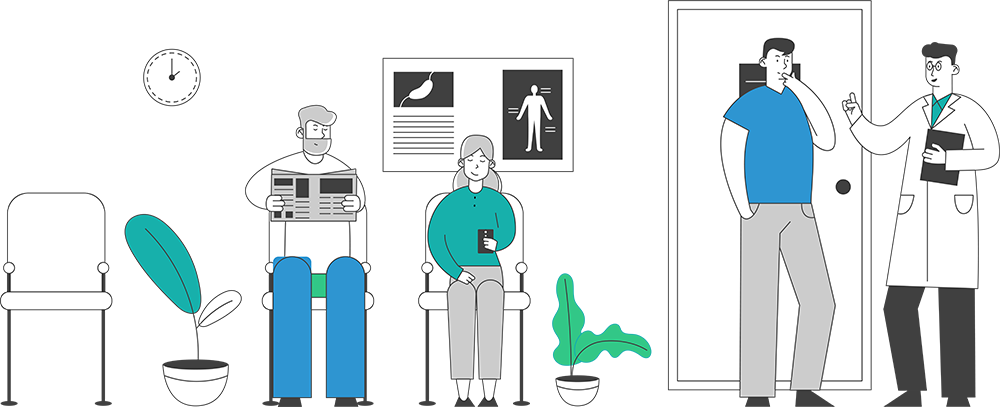
Future Implications and Potential Expansion
Scaling Telemedicine and Telepharmacy Solutions
The success of telemedicine and telepharmacy in reducing wait times and improving healthcare access has laid the foundation for further expansion. Scaling these solutions to reach a wider population is not only feasible but essential. This involves investing in technology infrastructure, training healthcare professionals in telemedicine practices, and ensuring that regulatory frameworks are in place to support continued growth (15).
Integration with Other Healthcare Services
Integrating telemedicine and telepharmacy with other healthcare services can create a more comprehensive and seamless healthcare experience (15). For example, electronic health records (EHRs) can be integrated with telemedicine platforms, allowing healthcare providers to access patients’ medical histories during virtual consultations. Telemedicine and telepharmacy can also be incorporated into chronic disease management programs, enabling continuous monitoring and medication management.
Addressing Potential Challenges and Limitations
While telemedicine and telepharmacy offer numerous advantages, they are not without challenges and limitations. These may include issues related to technology accessibility, internet connectivity, and the digital divide. Addressing these challenges through targeted initiatives that ensure equitable access to telehealth services for all populations is crucial. Additionally, ongoing research and development are needed to enhance the technology and address any security or privacy concerns that may arise (15).
Conclusion
This white paper has explored the transformative potential of telemedicine and telepharmacy in enhancing healthcare access and efficiency, specifically focusing on reducing wait times for medical care and prescription fulfillment. By leveraging digital connectivity, telemedicine enables remote consultations, diagnoses, and timely access to medical professionals. By replacing traditional pharmacy wait times, Telepharmacy, powered by MEDnRX technology, revolutionizes prescription fulfillment.
The value proposition of these technologies is evident in their ability to enhance patient convenience, minimize time and travel expenses, and improve medication adherence. Moreover, robust security and privacy measures ensure that patient data is protected, and compliance with healthcare regulations maintains the integrity of these services.
The user experience of telepharmacy, from accessing the MEDnRX app to on-screen consultations and direct prescription dispense, is designed with patients in mind. Flexible payment options further contribute to making healthcare more accessible. Case studies and testimonials have provided real-world examples of how telemedicine and telepharmacy have positively impacted healthcare delivery.
Looking ahead, there is immense potential for scaling these solutions, integrating them with other healthcare services, and addressing challenges to ensure equitable access.In this era of healthcare transformation, we have the opportunity to embrace telemedicine and telepharmacy as critical components of a more accessible and patient-centric healthcare ecosystem. By doing so, we can look forward to a future with reduced healthcare wait times, improved patient experiences, and, ultimately, better health outcomes for all.
A. References and Citations
[1] American Telemedicine Association. (2021). Telemedicine & COVID-19.
[2] Bashshur, R., Doarn, C. R., Frenk, J. M., Kvedar, J. C., Shannon, G. W., & Woolliscroft, J. O. (2020). Telemedicine and the COVID-19 Pandemic, Lessons for the Future. Telemedicine and e-Health, 26(5), 571-573.
[3]. Mikulic, M. (2023, September 15). Total drug prescriptions dispensed U.S. 2009-2022. Statista. https://www.statista.com/statistics/238702/us-total-medical-prescriptions-issued/
[4]. Centers for Disease Control and Prevention. (2017, November 16). CDC Grand Rounds: Improving medication adherence for chronic disease management - innovations and opportunities. Centers for Disease Control and Prevention. https://www.cdc.gov/mmwr/volumes/66/wr/mm6645a2.htm#:~:text=Approximately%20one%20in%20five%20new,%2C%20and%20duration%20(4)
[5]. Alodan, A., Alalshaikh, G., Alqasabi, H., Alomran, S., Abdelhadi, A., & Alkhayyal, B. (2020). Studying the efficiency of waiting time in outpatient pharmacy. MethodsX, 7, 100913. https://doi.org/10.1016/j.mex.2020.100913
[6]. National Center for Health Statistics (NCHS). (2019). Emergency Department Visits for Adults in Community Hospitals from Selected Characteristics: United States, 2017.
[7]. Telepharmacy: Transforming the Patient Experience.
[8]. National Association of Chain Drug Stores (NACDS). (2019). NACDS 2019 Chain Pharmacy Industry Profile.
[9]. Mehrotra, A., Chernew, M., Linetsky, D., Hatch, H., & Cutler, D. A. (2020). The Impact of the COVID-19 Pandemic on Outpatient Care: Visits Return to Prepandemic Levels, but Not for All Providers and Patients. Commonwealth Fund.
[10]. Arkansas Center for Health Improvement. (2015, April). Case study patient-centered medical homes: Focus on Pharmacy Innovation. https://achi.net/wp-content/uploads/2018/01/PCMH-Case-Study_-Focus-on-Pharmacy-Innovation.pdf
[11]. Wang, Y.-C., Tsan, C.-Y., & Chen, M.-C. (2021). Implementation of an automated dispensing cabinet system and its impact on Drug Administration: Longitudinal study. JMIR Formative Research, 5(9). https://doi.org/10.2196/24542
[12]. Taber, J. M., Leyva, B., & Persoskie, A. (2014). Why do people avoid medical care? A qualitative study using national data. Journal of General Internal Medicine, 30(3), 290–297. https://doi.org/10.1007/s11606-014-3089-1
[13]. Ng, Y. K., Mohamed Shah, N., Loong, L. S., Pee, L. T., & Chong, W. W. (2021). Barriers and facilitators to patient-centred care in pharmacy consultations: A qualitative study with Malaysian hospital pharmacists and patients. PLOS ONE, 16(10). https://doi.org/10.1371/journal.pone.0258249
[14]. Chu, H., Westbrook, R. A., Njue-Marendes, S., Giordano, T. P., & Dang, B. N. (2019). The psychology of The wait time experience – what clinics can do to manage the waiting experience for patients: A longitudinal, qualitative study. BMC Health Services Research, 19(1). https://doi.org/10.1186/s12913-019-4301-0
[15] Cai, X., Perez-Concha, O., Coiera, E., & Martin-Sanchez, F. (2019). Measuring the Efficiency of Telemedicine Services: A Scoping Review. Journal of Medical Internet Research, 21(7), e14669.

